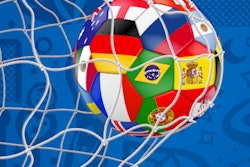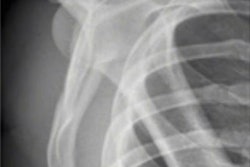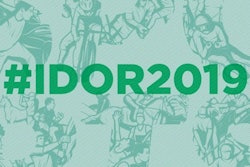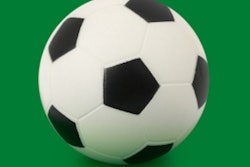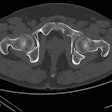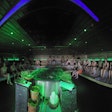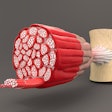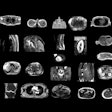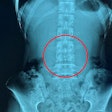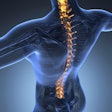
A capable sports radiologist searches for subtle injuries in athletes, with even the smallest ones not to be overlooked, says Dr. Roar Pedersen, one of the founders of the Norwegian musculoskeletal (MSK) imaging society. In this interview, he discusses the many aspects of sports imaging in Norway.
 Dr. Roar Pedersen.
Dr. Roar Pedersen.Pederson is the head of MSK radiology at Unilabs Norway, a provider of outpatient radiology at 12 locations in the country. He is also a member of the European Society of Musculoskeletal Radiology (ESSR) Sports Committee and team leader of the MSK section of the European Diploma in Radiology.
He has a special interest in hip, knee, and ankle imaging and cooperates with several sports clinics to provide high-quality reports and radiological care. He has a keen interest in quality improvement and efficiency and has studied and worked with several models for improving quality in radiological reports.
European Society of Radiology: Sports imaging is the main theme of the International Day of Radiology (IDoR) 2019. In most countries, this is not a specialty in itself, but a focus within musculoskeletal radiology. In your country, is there a special focus on sports imaging within radiology training or special courses for interested radiologists?
Pedersen: During ESSR 2012 in Innsbruck, four musculoskeletal radiologists founded the Norwegian Society of Musculoskeletal Radiology. This was confirmed by the National Radiology Society the same year, and we have since expanded the society and arranged several courses and events for MSK radiologists. Of course, the field of MSK is larger than just sports imaging, but as the population of Norway is active in sports and leisure activities, sports imaging has become a frequent task in many radiology clinics. Not all patients are high-performing athletes, but the injury patterns are similar. There is rising interest among radiologists for sports imaging, reflected in a course we arranged in April 2019, drawing over 60 participants, all Norwegians. In a country with 1,400 radiologists, I consider this impressive.
In radiology training, sports imaging does not have a special focus yet, but we are incorporating sports imaging gradually into radiology training courses as well.
Please describe your regular working environment (hospital, private practice). Does sports-related imaging take up all, most, or only part of your regular work schedule?
I am fortunate that I work with MSK imaging for the entirety of my work schedule, although sports imaging is only a part of this. Degenerative disease is of course common, as is trauma, inherited diseases, and arthritis. I am responsible for several sports clinics, orthopedic surgeons, and athletes/teams. This part of my job is challenging but also very satisfying, as it involves images and findings that could be straight out of a textbook in sports imaging, and sometimes entirely new findings. In Norway, most outpatient imaging is run by two large, private companies, and I am head of MSK imaging at one of these companies. We run half of the about 30 private clinics in Norway, cooperating with hospitals and the government. As head of MSK imaging, one of my tasks is to ensure good quality in images and reports. To get better, we need to do things the same way repeatedly, and to educate ourselves. This is a never-ending project, but it is rewarding as well.
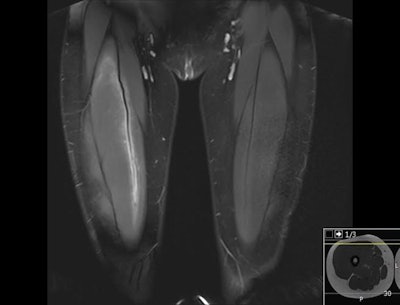 Coronal and axial images of a 17-year-old soccer player who has had two weeks with pain, especially when kicking the ball. The images show edema in the rectus femoris muscle, concentrated around the intramuscular deep tendon. Soccer injury is common, and muscle injuries in the leg and thigh may be seen in typical locations. The rectus femoris has a peculiar architecture, and edema and muscle strain may have a strange presentation if the radiologist is not familiar with the anatomy. All images courtesy of Dr. Roar Pedersen.
Coronal and axial images of a 17-year-old soccer player who has had two weeks with pain, especially when kicking the ball. The images show edema in the rectus femoris muscle, concentrated around the intramuscular deep tendon. Soccer injury is common, and muscle injuries in the leg and thigh may be seen in typical locations. The rectus femoris has a peculiar architecture, and edema and muscle strain may have a strange presentation if the radiologist is not familiar with the anatomy. All images courtesy of Dr. Roar Pedersen.Based on your experience, which sports produce the most injuries that require medical imaging? Have you seen any changes in this regard during your career? What areas/types of injuries provide the greatest challenge to radiologists?
In the U.S., there is a lot of focus on the "overhead throwing athlete" and associated injuries of shoulder and elbow. This is different from Norway. We do not play baseball, football is by far the largest sport, and we see a lot of injuries of the hip, knee, and ankle. Other sports are popular, including ice hockey, basketball, martial arts, and bicycling. Norway is known for skiing, but this surprisingly does not generate too many injuries that need imaging. A very active population leads to imaging not only of athletes in their twenties. Children and old people are active and becoming injured. Thus, the field expands, as MSK imaging of children is challenging because of a lot of developmental variations, and MSK imaging of old people is challenging because of coexistent degenerative changes. The injuries themselves may not change in presentation from year to year, but there is a change in imaging strategy that has evolved throughout the last 20 years: The availability of MRI scanners in Norway has steadily increased. The demand from clinicians and especially patients for early MRI scanning is increasing. These developments change the work of a radiologist. We see changes that we didn't see previously because we are imaging earlier than before. We make findings that the orthopedic surgeons did not know a few decades ago, and the pressure on therapy may increase because of our findings. On the other hand, early imaging may also be important as a therapy strategy; if we can clarify that nothing vital is injured, the clinician may guide the patient into the correct therapy regime.
However, there is still work to be done. We need to better understand what we see and make the correct diagnosis, not only report morphology. Imaging has its own terminology, and clinicians can become frustrated when we do not give clear answers.
Please give a detailed overview of the sports injuries with which you are most familiar and their respective modalities.
I have worked a lot with hip, knee, and ankle imaging, especially MRI. Injury to the cruciate ligaments, posteromedial and posterolateral corner of the knee has been a special interest, as well as injuries around the ankle. However, the spectrum of sports injuries covers all joints, both upper and lower limb, and every day there is a new challenge and something new to learn.
What diseases associated with sporting activity can be detected with imaging? Can you provide examples?
Imaging can detect both subtle and obvious injuries associated with sporting activity. Early stress reactions in bone, tendons, and soft tissues can be seen, as well as all sorts of ruptures and fractures. However, some injuries are subtle, and if you don't look for them, you will not find them. A sports radiologist must look for smaller changes than other radiologists are used to. This may be because the athlete is imaged very early after an injury or after the start of a complaint, and smaller injuries may be more important in an athlete than in other patients.
From time to time, we report findings that are not associated with sports. Sometimes, the symptoms are due to an MSK tumor. Sometimes there are findings near a joint that we discover accidentally, such as pathology in the pelvis, lung, or axilla. This can be a challenge, as we should "look to the corners," and be aware of other diseases that are not related to the MSK field.
Radiologists are part of a team; for sports imaging this likely consists of surgeons, orthopedists, cardiologists, and/or neurologists. How would you define the role of the radiologist within this team and how would you describe the cooperation between radiologists, surgeons, and other physicians?
The radiologist is crucial in sports imaging! It is easier for us to appreciate the different demands that different levels of healthcare have. The surgeon wants to know if they should operate or not. The neurologist is concerned with the nerves. The physiotherapist wants to rule out serious injury so they can start to rehabilitate the patient. The patient just wants to know how long the injury will take to heal, and when sporting activity can resume. All these different needs are based on the clinician's own angle to the problem. We as radiologists are hopefully objective and comprehensive; we describe what there is to be found in the images. Even though not everything can be seen in imaging, we provide a kind of insight that will guide the patient and the clinician further on. In some institutions, cooperation between clinicians and radiologists is excellent, but I still believe that this is a large task that needs improvement in the future. How can we make radiology even more relevant? We need to work with clinicians to achieve that, but we should be in the lead as we are at the center of modern patient care.
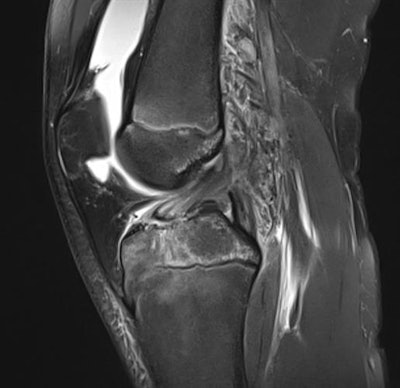 A young population will present with different injuries than adults. Physeal stress and changes are common, as are bony avulsions. Above, a 14-year-old soccer player sustained a knee trauma one week ago. Sagittal proton-density fat-suppressed (PDFS) image shows an avulsion of the distal insertion of the anterior cruciate ligament (ACL), with some diastasis. If not imaged in the acute phase, or if there is less diastasis, such an injury may be overlooked.
A young population will present with different injuries than adults. Physeal stress and changes are common, as are bony avulsions. Above, a 14-year-old soccer player sustained a knee trauma one week ago. Sagittal proton-density fat-suppressed (PDFS) image shows an avulsion of the distal insertion of the anterior cruciate ligament (ACL), with some diastasis. If not imaged in the acute phase, or if there is less diastasis, such an injury may be overlooked.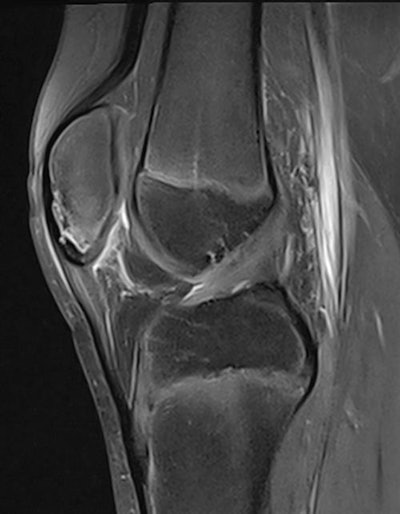 A 10-year-old athlete had anterior knee pain after a period of intense physical activity. Sagittal image shows stress reaction in the inferior part of the patella and changes suspicious of patellar sleeve avulsion.
A 10-year-old athlete had anterior knee pain after a period of intense physical activity. Sagittal image shows stress reaction in the inferior part of the patella and changes suspicious of patellar sleeve avulsion.The role of the radiologist in determining diagnoses with sports imaging is obvious; how much involvement is there regarding treatment and follow-up?
If the clinicians trust your judgments and find your reports relevant and useful, they will also want to use your skills in follow-up and treatment. Follow-up with postoperative imaging is especially challenging. The surgeon will immediately understand if you are updated on surgical procedures or not. Be sure to demand good clinical information and information on what procedures have been performed. Ask the clinician what they most of all want to know when they order a postoperative study. You have to give the relevant answers, or the clinician will not have any use for your report. There is huge potential for cooperation and improvement in this area.
Radiology is effective in identifying and treating sports-related injuries and diseases, but can it also be used to prevent them? Can the information provided by medical imaging be used to enhance the performance of athletes?
A trend over the last few years has been to scan an athlete before they are bought by a new team. I can understand this. If one is buying something very expensive, one wants to be sure that there are no hidden or unknown problems; for instance, a high-grade tendinosis or partial rupture in the hamstring tendon! In the future, we may be able to predict which athletes are best suited for which sport with imaging, but we are not there yet. Today, the value of imaging to enhance an athlete's performance may be to assure them that their ligaments, tendons, and muscles are actually good enough to perform, so that they can do their very best without fear of imminent injury. Imaging can guide therapy and make sure that the performer will return to full activity as soon as possible. In that regard, imaging itself does not enhance performance, but reduces an athlete's absence from sports and increases recovery speed.
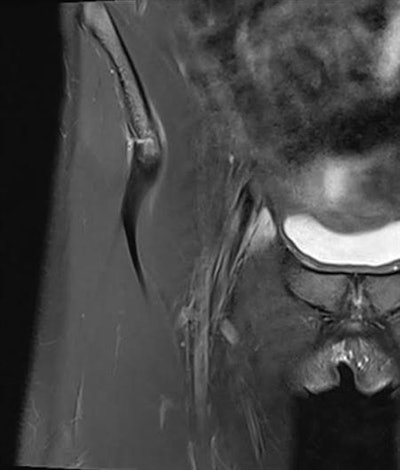 A 23-year-old soccer player had hip pain after a forceful kick. Injury to the proximal origin is shown on a coronal image of the rectus femoris, with a partly avulsed fragment from the spina iliaca anterior inferior. The tendon is intact and conservative treatment will heal the injury.
A 23-year-old soccer player had hip pain after a forceful kick. Injury to the proximal origin is shown on a coronal image of the rectus femoris, with a partly avulsed fragment from the spina iliaca anterior inferior. The tendon is intact and conservative treatment will heal the injury.Many elite sports centers use cutting-edge medical imaging equipment and attract talented radiologists to operate it. Are you involved with such centers? How can the knowledge acquired in this setting be used to benefit all patients?
In Norway, we do not have sports centers with their own imaging facilities. However, many sports centers want to work with dedicated sports radiologists and this cooperation is very rewarding. We get to see young patients in an early phase of injury, with the possibility to discuss clinical findings and radiology findings together. Also, athletes are very fit and have clearly visible ligaments and soft-tissue structures, which makes it easy to understand and learn anatomy. I strongly believe that we can learn a lot from injuries athletes sustain and transfer this knowledge to ordinary patients.
The demand for imaging studies has been rising steadily over the past decades, placing strain on healthcare budgets. Has the demand also increased in sports medicine? What can be done to better justify imaging requests and make the most of available resources?
The field of sports imaging is growing. Clinicians understand that imaging may be a very valuable part of evaluation, monitoring, and follow-up because we can see things that are hard to evaluate clinically. Radiologists do not want to make a mistake with any patient, but even less so if the patient is at a high level of professional sports. A radiologist's evaluation may even be cited in the media! Imaging is therefore becoming more and more important. The demand for imaging in these otherwise healthy patients may be a challenge if one has limited access to imaging and the queue is long. In Norway, we have a growing insurance market that the clubs and teams rely on more and more. However, we should not forget that we are doctors, and we must contribute to a healthy policy in imaging. Not all injuries need imaging, and maybe not as often. Communicate with clinicians, and they will rely on the radiologist to make good judgments as to whether imaging is likely to add anything to the clinical evaluation.
Athletes are more prone to injuries that require medical imaging. How much greater is their risk of developing diseases related to frequent exposure to radiation and what can be done to limit the negative impacts from overexposure?
Most sports injuries are evaluated with ultrasound, ordinary x-rays, and MRI. CT is seldom required. The radiation dose from an x-ray is negligible but should nevertheless be considered when deciding which modality should be used for a particular injury. Sometimes x-ray images are the problem-solver; therefore, they should not be forgotten! MSK ultrasound is not yet widely used in Norway but there is good access to MRI. MRI is harmless but generates a lot of images and a lot of details. Overexposure to radiation is probably not a problem in sports imaging, but overexposure to imaging for radiologists can be a problem. Sometimes one will find something new for every study made on a particular patient, and it can be hard to sort out the truly relevant findings.
Do you actively practice sports yourself, and if yes, does this help you in your daily work as an MSK radiologist?
I struggle as an amateur golfer and I have a good understanding of all the stress and pain that you may encounter when you try to excel in something. Epicondylitis, intercostal myalgias, back pain, shoulder pain, blisters -- you name it and I have felt it. On the other hand, when you succeed or make progress, you are willing to ignore the signals from your body, and it is no wonder athletes end up with injuries now and then. I want to mention what I have seen from another perspective. My son was a skilled basketball player in his teens. I followed him and his team closely. These young boys could not get injured as this would have meant absence from play and potentially a delay, pause, or termination of their sporting careers. For many people, sport is the real meaning of life, their identity and their joy. An injury can have a serious negative impact on their life, whether they are top athletes or just doing recreational activities. An injury will be equally important to children, teens, grown-ups, or elderly, affecting their quality of life. That is also why I believe sports imaging is an important part of modern healthcare.
Editor's note: This is one of a series of interviews with 40 musculoskeletal (MSK) and sports imaging experts from Europe, North America, Latin America, Asia, Australia, and South Africa. These interviews are available for free on the IDoR website.
Copyright © 2019 European Society of Radiology




